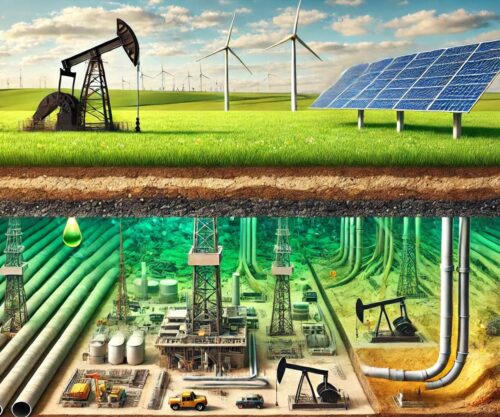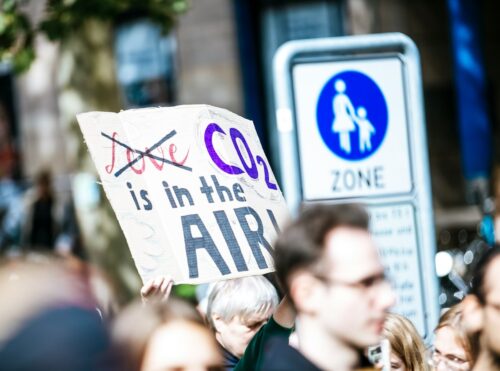 Joe Biden wants to take one of the great American success stories of the last several decades — and drive it into the ground.
Joe Biden wants to take one of the great American success stories of the last several decades — and drive it into the ground.
He would turn his back on the stupendous wealth represented by proven reserves of oil and gas in this country.
Rather than focusing on producing cheap, abundant energy — a key ingredient to human progress through all of human history — he would embark on the fool’s errand of trying to adjust the world’s thermostat 80 years from now.
After a 50-year effort to diminish our reliance on Middle Eastern oil, which has miraculously happened at last, Biden would force America to transition to solar and wind, industries currently dependent on Chinese supply chains.
Whereas California has embraced the radical goal of a carbon-free electric grid by 2045 and has drastically increased the price of energy in the state already, Biden has seen and raised the Golden State’s gambit by embracing a goal of 2035.
All this was underlined by Biden’s statement at the end of last week’s debate that he wants to transition from oil, which constituted a gaffe only for anyone who hadn’t been paying attention to his Green New Deal-inflected energy plan.
It’s a funny time to want to kneecap oil and gas. Proven reserves of natural gas in the United States are higher than ever before, thanks to American-made technological innovations.
A couple of years ago, the United States surpassed Russia and Saudi Arabia in crude oil production. In recent years, petroleum and natural gas exports have been increasing. And, of course, the rise of natural gas has cut US carbon emissions.
This should be considered a national strength to be built on, not a national shame to be put on a glide path to extinction. Fossil fuels are a tremendously useful source of energy, and no hype about renewables can obscure that reality.
In 2019, petroleum, natural gas, and coal accounted for 80 percent of overall energy consumption in the United States, according to US Energy Information Administration.
Renewables made up only 11 percent, and the bulk of that came from biomass (wood and biofuels) and hydroelectric. Despite being heavily subsidized, wind and solar combined were responsible for only about a third of our renewable energy.
As the Danish economist Bjorn Lomberg points out, the share of US energy that comes from renewables declined over the last century. The rise of fossil fuels was a boon to humanity, a major advance over those old renewables, wood, and dung.
“Over a century and a half,” Lomberg writes, “we shed our reliance on renewable energy and powered the Industrial Revolution with fossil fuels.”
The oil and gas industry should also be prized as a source of good American jobs. Petroleum engineers make about $137,000 a year, pump system and refinery operators, $72,000 a year, wellhead pumpers, $58,000, and roustabouts $44,000, according to the Bureau of Labor Statistics.
The idea that we are going to transition to wind and solar painlessly is a fantasy. Germany has been spending tens of billions a year trying to make this happen.
Its renewable-energy program has doubled the cost of energy, while fossil fuels still account for about 80 percent of its energy supply.
If we think eschewing fossil fuels is going to convince other countries to do the same, we are fooling ourselves. Like in the United States, the industrial takeoff in China coincided with a jump in the use of coal.
China is still building coal plants at a furious clip. The Middle Kingdom has plans to add more than the current US coal-fired capacity on top of its already prodigious use of coal, which accounts for more than half of the world’s total.
The Biden plan is an assault on American ingenuity and wealth, not to mention common sense. At least after last week, no one can say he wasn’t warned.
Read more at NY Post



















Joe Biden makes no common sense he sounds as if he has been smoking way too much Wacky Weed
A couple other thoughts. If you look at oil & gas (stand alone) as a percentage of U.S primary energy, the number used by EIA is SIXTY-FIVE percent. You read that correctly as just under 2/3rd’s of our total domestic (primary) energy is attributed to oil & gas. Wind & Solar? That stands at FIVE percent. Just fact. Coal is being phased out in electricity and industrial heat because NATURAL GAS is the cleaner, scalable & cost effective alternative. It’s the “back stop” for that ongoing transition and (also) provides the reliable back-up to intermittent electricity sources (i.e. wind & solar). The majority of CO2 reductions in the U.S electricity sector are due to natural gas power generation, not renewables as activists claim. So, what does the Sierra Club, WildEarth Guardians, et al suggest for a replacement for natural gas? Good luck ever seeing a constructive alternative being suggested on any of their websites. Just one facet of a much larger & complex energy arena. Sorry “Oil Haters”…No EASY BUTTON in this line of endeavor…
Well said Randy. But one downside with natural gas for electricity generation is that, unlike coal and uranium where you have a significant storage of fuel, you have no way to store a significant amount of natural gas onsite. This was seen in Minnesota last year when they had the very cold temperatures along with no wind so no electricity from their wind turbines so Xcel Energy was depending on its gas-generated electricity. But there wasn’t enough pipeline capacity to meet all the needs so Xcel was asking their customers to turn their thermostats down to conserve the natural gas supply.
I’m not sure what the solution is here. Originally the natural gas-fired plants were used as marginal generators of electricity for surge demand since, unlike coal and nuke plants which are base power plants, the natural gas plants can be brought up and down quickly. I do think we need to start building and deploying more nuke plants, in particular those that are seeded with Thorium to create the Uranium needed for fission.
Steve, I agree. All of these fuel options have pluses & minuses. The environmental activists figured out about 10 years ago that curtailing pipeline infrastructure was a good way to “choke off” natural gas supplies. As far as base load power, we ought to be ramping up modular nuclear & advance nuclear reactors at a steady pace. I am glad to (finally) see the Democrats have written nuclear back into their energy platform. Whether that will have any real support going forward is another issue. Regardless, I think we both may agree that over-emphasis of wind & solar is not the right focus when one looks at the broader domestic energy picture.
Excellent post Randy.
I like the modular nuke plants idea.
They must be close to cost effective by now. No??
AND, most definitely have a level playing field, re subsidies.
In the UK our government are floundering about trying to get a new nuclear plant built (a bit sad given our early history in the field) but I’ve been wondering for some time about the modular nuclear plants used in the large US aircraft carriers.
Surely well established technology that if not instantly useable would be readily adaptable.
Allan, I read a couple weeks back that the Idaho National Laboratory was partnering with Nucor(?) on a 100MW modular nuclear reactor as a test site that I believe will supply electricity to a Utah utility. Not a larger scale prototype, but a start..
What most folks in the U.S continually get conflated is the concept of primary energy and the role of “renewables.” When Joe Biden says he wants to “phase out” oil & gas with wind & solar, there is a HUGE disconnect with our domestic energy system. A few items to consider:
1.) Electricity is only TWENTY of our primary (domestic) energy consumption. Wind & solar, to date, have NO IMPACT on transportation fuel, industrial heat, numerous commercial & residential applications, not to mention the MYRIAD of useful consumer products produced by petroleum that each & EVERY U.S citizen uses every day.
2.) If you go out to the Energy Information Administration (EIA) website, you’ll note a couple basic trends NONE of these “aspirational” environmental activists seems to be aware of. In the 1950′-60’s, the U.S depended on fossil fuels for 85% of our primary energy. Today, it’s 80%. If you look at the EIA projections on energy out to 2050, the estimate is around 70%, as I recall. The energy TRANSITION away from fossil fuels will take DECADES to complete. So, I have a better idea for the Democrats. Instead of VILIFYING energy PROVIDERS, start suggesting CLEAN, SCALABLE & AFFORDABLE alternatives to replace fossil fuels. Statements like “100% renewables or zero carbon by X date” are SLOGANS and have no basis in functional reality. That’s a ZERO, all right…as in no CONSTRUCTIVE solution.
3.) Open up the energy markets to TRUE COMPETITION. If you are going to eliminate oil & gas tax deductions for intangible drilling costs, falsely disguising those as “subsidies,” then go the final step. Eliminate ALL subsidies in the energy arena, including wind & solar and let the marketplace determine who the “top dogs” really are. If wind & solar are as efficient as claimed, then they’ll DOMINATE. As a case study, I might suggest you examine California as an example of what NOT to do. Too much reliance on intermittent electricity sources, lack of conventional (back-up) power generation and insufficient supplies of domestic oil & gas (60% foreign imports) has left the “Golden” State with rolling blackouts and the HIGHEST electricity & fuel costs in the country. Sounds kind of like a “mini” Green New Deal. Is that a prescription for success at a national level?
So far, most of this has had regional impacts and has been (primarily) an academic exercise. If we do not think carefully about our choices in formulating a realistic & coherent national energy strategy & attendant policy, then America could be heading for the “Hurt Locker.” Very unfortunate…and totally AVOIDABLE if common sense & reason can “rally” and make a comeback in the national debate…